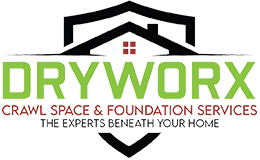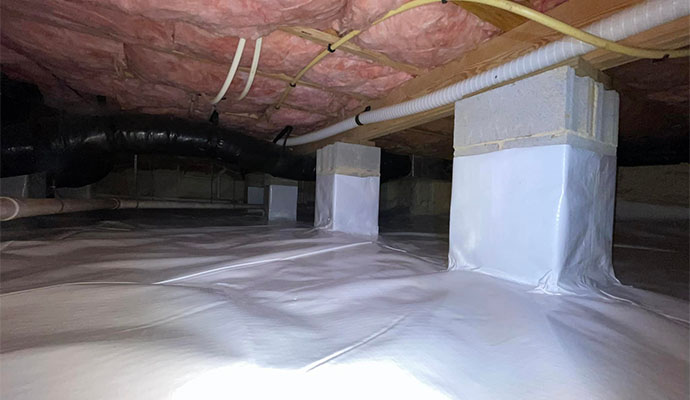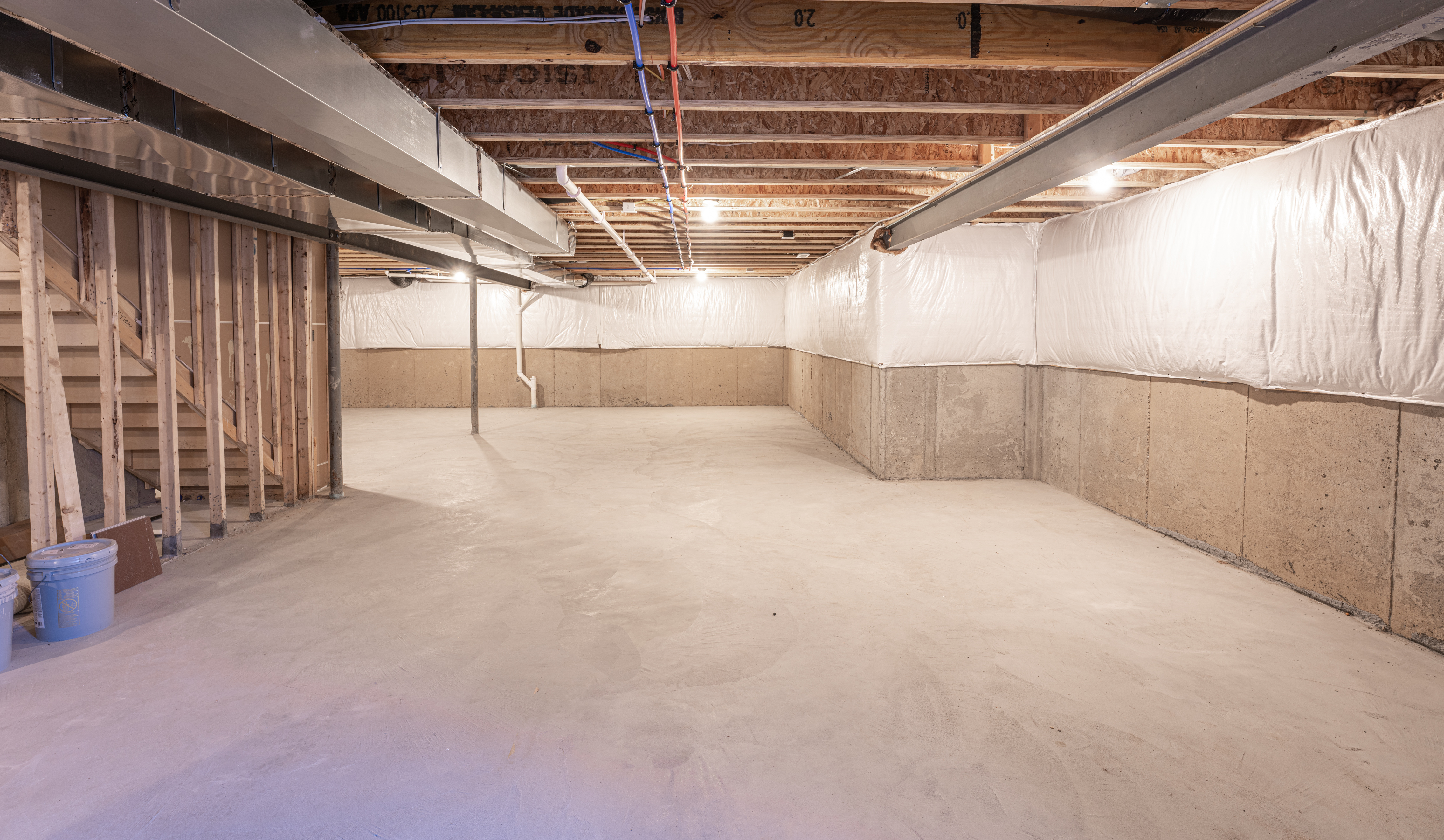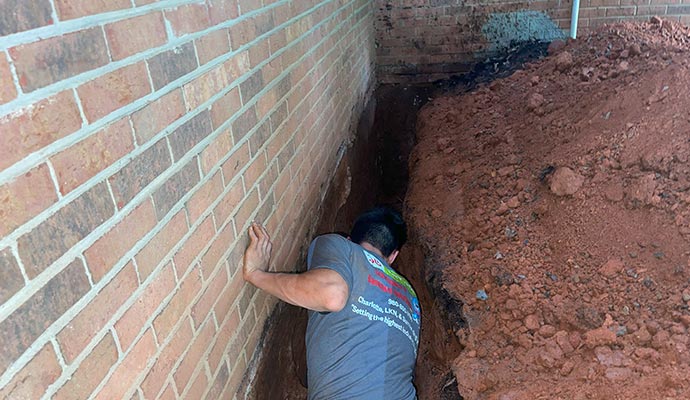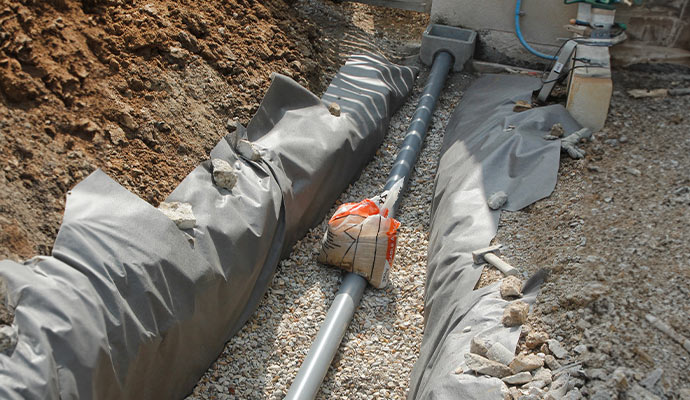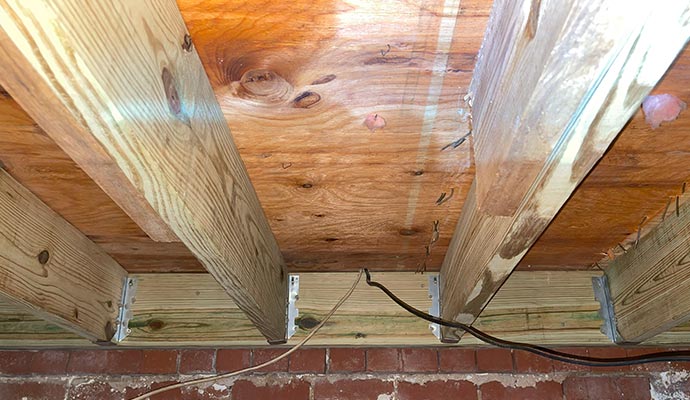
Dry Rot Repair in Charlotte and Lake Norman
Dry rot may sound like a small problem, but it can threaten the safety and stability of your home. This type of wood decay often develops in crawl spaces, basements, and other damp areas. Left untreated, it weakens beams, girders, and band sills, which can lead to sagging floors, cracked walls, and costly long-term damage.
At DryWorx, we provide expert dry rot repair for homeowners in Charlotte, Lake Norman, Denver, Concord, and nearby areas. Our team identifies the problem, removes the damaged wood, and repairs the structure so your home stays safe and strong.
980-737-7727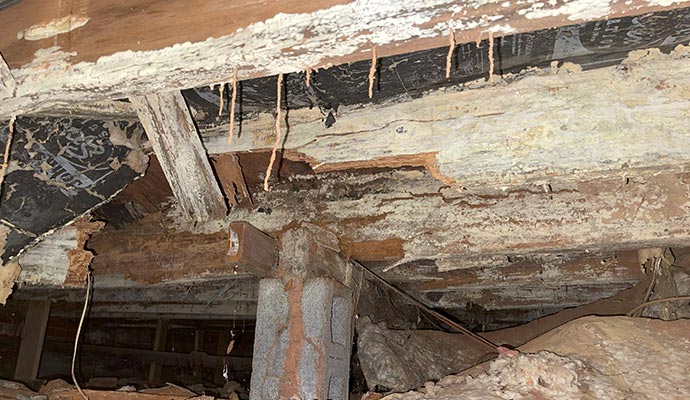
What is Dry Rot, and Why Can't it be Ignored?
Dry rot is a form of wood decay caused by a fungus that grows in damp conditions. Despite the name, dry rot doesn't appear in dry areas; it needs moisture to spread. Crawl spaces with high humidity, poor ventilation, or water leaks are common trouble spots.
As the fungus spreads, it eats away at the fibers inside the wood, leaving it brittle, crumbly, and weak. Over time, dry rot can spread through beams, joists, and band sills, putting your home's vital structural areas at risk.
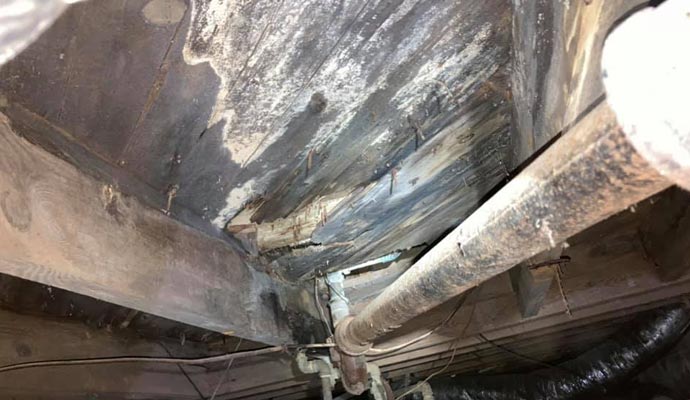
Don't Miss These Dry Rot Warning Signs
Catching dry rot early can save you money and protect your home from serious damage. Look for these signs:
- Crumbly or cracked wood: Wood that easily break or look dried out.
- Discoloration: Dark or uneven patches that signal fungal activity.
- Fungal growth: White, gray, or cotton-like strands on wood surfaces.
- Musty odors: Damp, moldy odors in crawl spaces or basements.
- Structural problems: Sagging floors, sticking doors, or shifting walls.
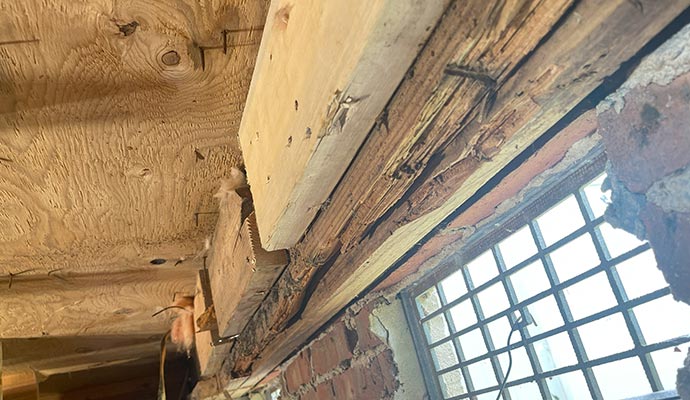
Common Causes of Dry Rot in Your Crawl Space
Several factors can trigger dry rot in a home:
- Excess moisture: Leaky pipes, poor drainage, or groundwater seepage.
- Poor ventilation: Crawl spaces with limited airflow trap damp air.
- Water-damaged wood: Floods, plumbing, or roof leaks create weak spots.
- Pest damage: Termites or wood-boring insects speed up decay.
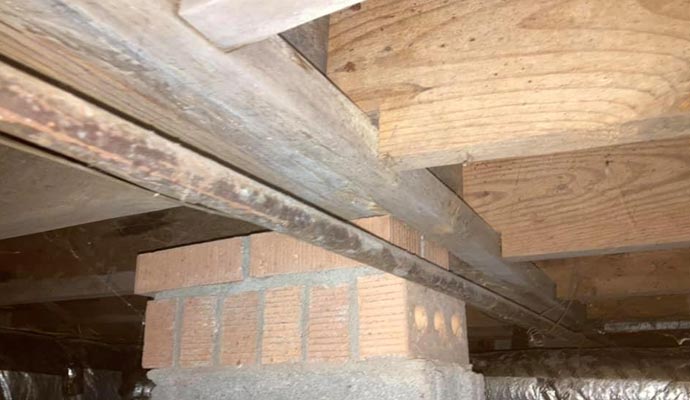
Effective Dry Rot Repair After Water Damage
We fix dry rot quickly and safely, protecting your home for the long term. Our process includes:
- Control moisture: We stop leaks, fix drainage, and improve airflow to keep wood dry.
- Remove damaged wood: We take out decayed beams, joists, or band sills to stop the rot from spreading.
- Treat fungi: We use professional fungicides to kill spores and protect undamaged wood.
- Replace and strengthen: We install rot-resistant wood and reinforce supports for lasting stability.
- Check back: We inspect your crawl space after repairs to make sure it stays safe and dry
More of Our Crawl Space and Structural Restoration Services
Dry rot often happens alongside other serious structural problems. That's why DryWorx offers essential structural repair services. We repair damaged masonry piers and posts to keep your floors level and stable.
We replace wood damaged by termites to stop your home from weakening. We also fix wood and supports harmed by water, preventing rot from spreading and keeping your home strong. Protect your home's foundation and structure; call us today to schedule expert structural damage repair services!
Our Additional Home Repair or Protection Services in Charlotte and Mooresville
We offer more than just dry rot and structural repairs. Our team provides services that protect key areas of your home and prevent future damage, including:
Crawl Space Services
Keep your crawl space dry, ventilated, and free from damage.
Basement Waterproofing
Keep water out and protect your basement from moisture.
Foundation Repair
Stabilize your home's foundation for long-term safety.
Exterior Services
Solutions to protect your home from water, pests, and damage.
Call Us Now for Dry Rot Repair Services in Charlotte, Concord and Lake Norman
Don't wait for small signs of dry rot to turn into costly repairs. DryWorx specializes in professional and dependable dry rot repair services throughout Charlotte and nearby areas.
Call or contact us online to request your free inspection. We'll find the problem, repair the damage, and help protect your home's structure for the future. With our team on your side, know your home will stay safe, strong, and secure for years to come.
980-737-7727